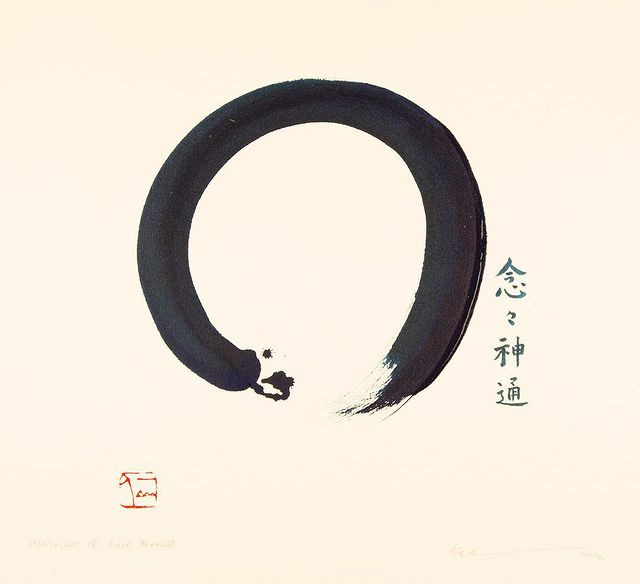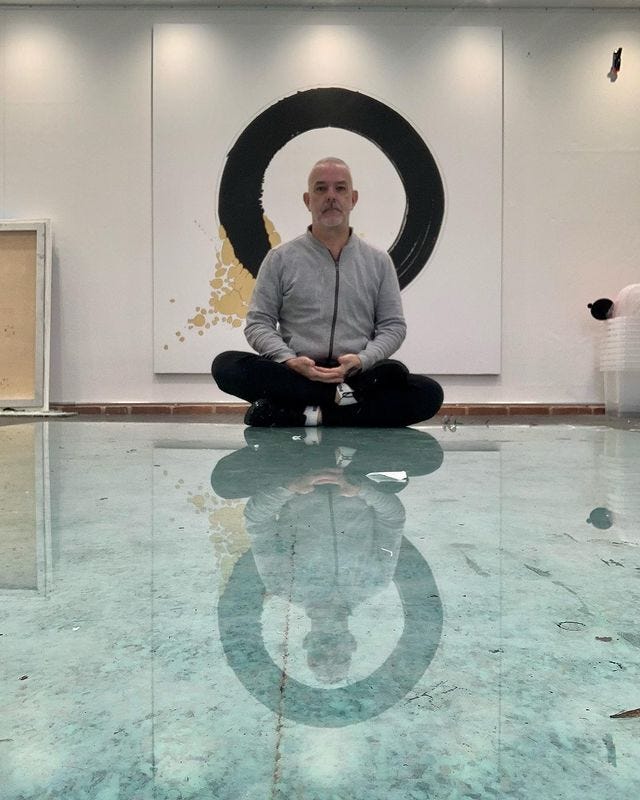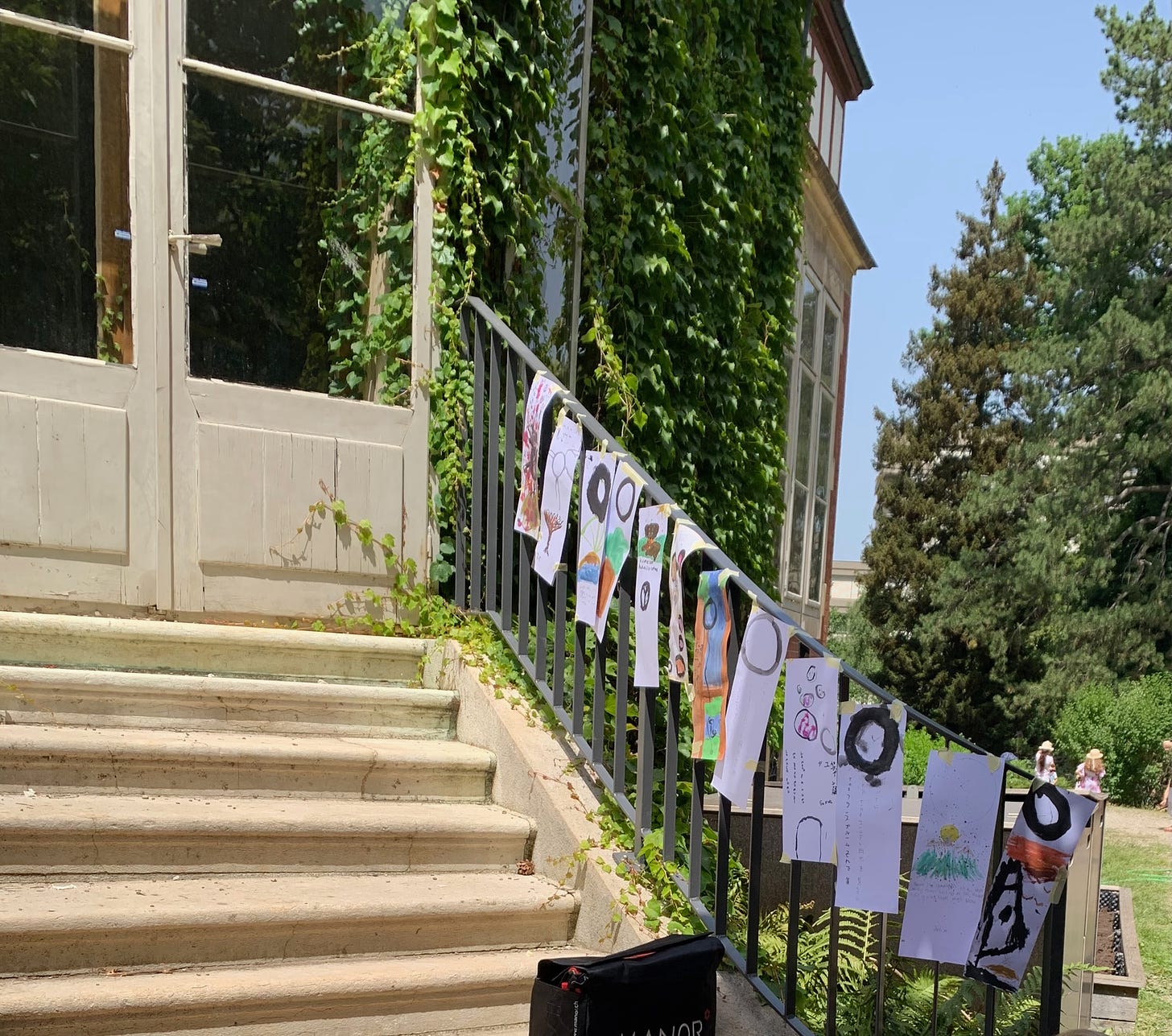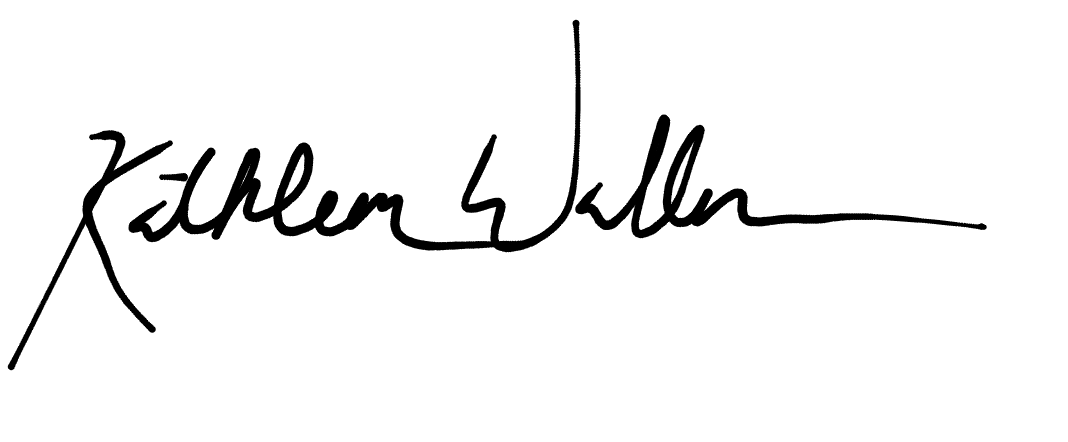The Saturday Brunch: a figurative flat white or fizzy to start your weekend
An Ensō may look ‘like a circle’ but it is filled with paradoxes, just like Zen itself. Perhaps it can’t offer enlightenment in itself, but it can be one of the sources of getting there through various forms of meditation as well as representing an enlightened state aesthetically and symbolically.
Artist Rod McIntosh discusses the Ensō and his definition of it:
At first glance the ancient enso symbol appears to be nothing more than a miss-shaped circle but its symbolism refers to the beginning and end of all things, the circle of life and the connectedness of existence. It can symbolise emptiness or fullness, presence or absence. All things might be contained within, or, conversely, excluded by its boundaries. In Zen it can represent the perfect meditative state of enlightenment.
Enso may symbolise many more things including: strength, truth, single-mindedness, the entirety of the universe, equality and the void.
Creative Ensō introduces the concept thus:
The Ensō expresses a moment when the mind is free to let the body create. At Creative Enso, this Zen symbol is an expression of the flow and connections between well-being and creativity.
The Ensō circle, which can be open or closed, symbolizes an expression of life, showing both the beginning and end. It’s also used to express absolute enlightenment, strength, elegance, the universe, and wuji (the void).
An open or incomplete circle represents the beauty of imperfection, whereas a completed circle represents perfection. Zen practitioners relate this to the idea of wabi-sabi, or the beauty of imperfection.
The Ensō circle has been around for hundreds of years, with the earliest example credited to Ranzan Shoryu (1718-1797).
If you want to learn more, there’s a great book devoted completely to the imperfect painted circle called Ensō: Zen Circles of Enlightenment, by Audrey Yoshiko Seo.
When I first encountered the Ensō explicitly in Professor Olds’ class (which I talked about last week), I didn’t know what the big deal was. I mean, I thought, cool aesthetic, sometimes. Looks like modern art, the kind often criticized for a lack of skill.
But the more Ensō I looked at and the more I learned about what Ensō and Zen are, the more I enjoyed not only looking but creating Ensō. I started to discover the importance of the slight differences among them, almost like a riddle (or Zen Kōan).
Today, let’s take a closer look at this practice and then, if you’re game, try some of your own. You’ll need some paint, a paint brush, and something to paint on. I’ll talk more about your choices here when we get to the actual painting part, but as long as you have some version of this at home, you can try it out today.
Zen masters
Zen masters over the past 300 years have painted the Ensō as part of the practice of Zagen, art devoted to and emanating from Zen Buddhism, as discussed last week.
Some greats to look at include Tōrei, Nantembō, and Sengai. We looked at Tōrei a bit last week and the unusual anecdotes of his life. Sengai is especially famous for ‘Circle, Triangle, Square’ which includes an Ensō alongside other simple shapes to represent the universe.
Nantembō painted creative inscriptions next to his circle representing samsara, “the world of birth and death in which we are all enclosed” (Art of Zen, Stephen Addis, p. 199). He used calligraphy to write “inscriptions such as ‘Is this a cake? A dumpling? The ring around a bucket?’ or ‘Eat this and drink a cup of tea!’ [as well as] ‘if you become like a child, you can understand’” (ibid). He plays with the viewer and encourages them to interact with their own ideas.
He was doing this a hundred years ago; who said old Zen masters didn’t have fun?
Contemporary Ensō painters
Takashi Murakami has a lot in common with Nontembō. He is perhaps more known for cutesy designs of flowers with smiley faces that also became merged with a Louis Vuitton campaign, but he has also depicted many ideas emanating from Zen Buddhism and holds a PhD in Nihonga painting.
A couple years ago, he turned to the Ensō as a source of inspiration for his work, either painting it on its own or as part of a greater project. He also created a book of many of the works, including explanations of his inspiration - personal, philosophical, and aesthetic. The below work called ‘Exponentially Expanding Universe’ is included in the book.
One of his galleries in Tokyo - Kaikai Kiki Gallery - writes:
With “Ensō”, the gallery will feature a selection of paintings from Murakami’s “Ensō” series. The subject of these new paintings is one of the most famous motifs in Zen painting, the Ensō (literally circle) that symbolizes emptiness, unity and infinity in Zen Buddhism. Recently, Murakami has also painted the great figures of Zen Buddhism: Daruma the Great, the founder of Zen; the severed hand of the monk Eka (Huike), a sacrifice to his master Daruma (Bodhidharma) whom he later succeeded; and more recently, The 500 Arhats, in a 100-meter long painting representing the 500 wise followers of Buddha who attained enlightenment by overcoming their greed, hatred, and delusions, and destroyed their karmic residue from previous lives. Murakami painted The 500 Arhats in response to the 2011 East Japan Earthquake and Tsunami, an event which profoundly changed the direction of his work.
He discusses his religion and faith at length on Instagram:

Here are a few other examples; you can click the link to go directly to the artist’s or gallery’s Instagram page:
And if you’d like to view a master working with a VERY large brush, as well as an interesting Zen context, check out this video of sensei Kazuaki Tanahashi at work:
Try it out!
By now, hopefully you’re thinking you’d like to try it out! And why not? Maybe you’ve done it before. Try it again. Or devote a whole hour or two to creating many Ensō to see how you feel during and after.
In my ‘surprise’ year of teaching primary school art, I developed a unit with Grade 2 students around Japanese art, ending with the painting of a scroll that included an Ensō, haiku (written by the child), and some element of landscape painting. We studied and practiced each part separately before making the whole. For landscape painting, we observed and copied Japanese works, especially of Mount Fuji. Then, in the form of pastiche, we looked at Swiss iconic landscapes, bringing a foreign artistic practice to their local experience.
I encouraged students to use the variety of Mother Tongue and languages in the classroom to write their poems. Some of them decided to try out Japanese characters! At first I cringed at what they might write by accident; then I thought: they’re 7! If they want to try to write in Japanese, they should! It was a great activity to explore their creativity in relation to philosophical ideas and language skills.
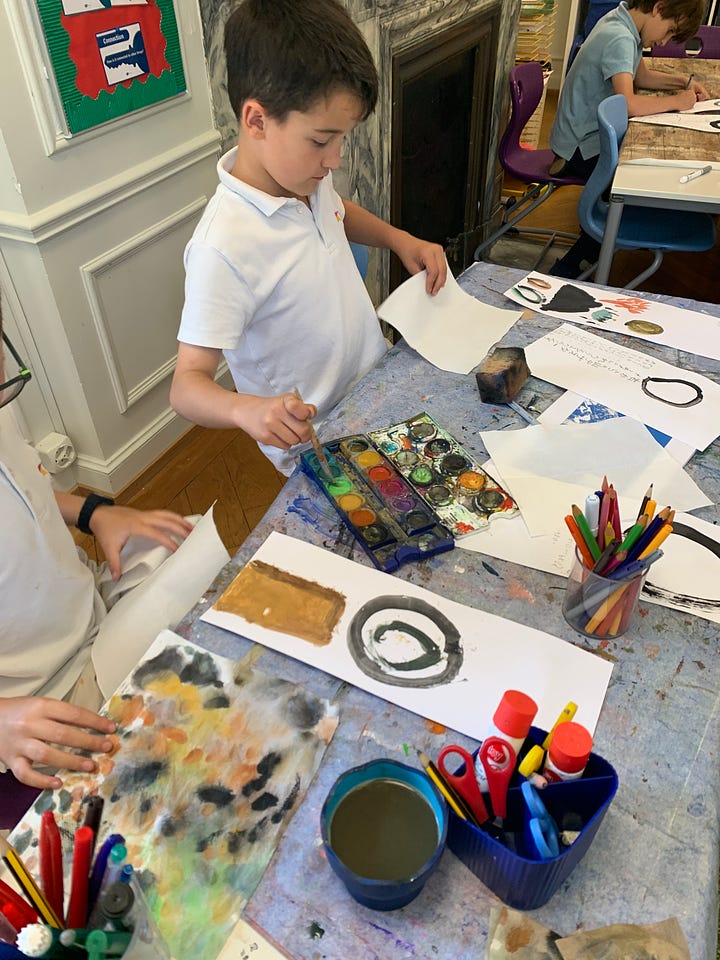
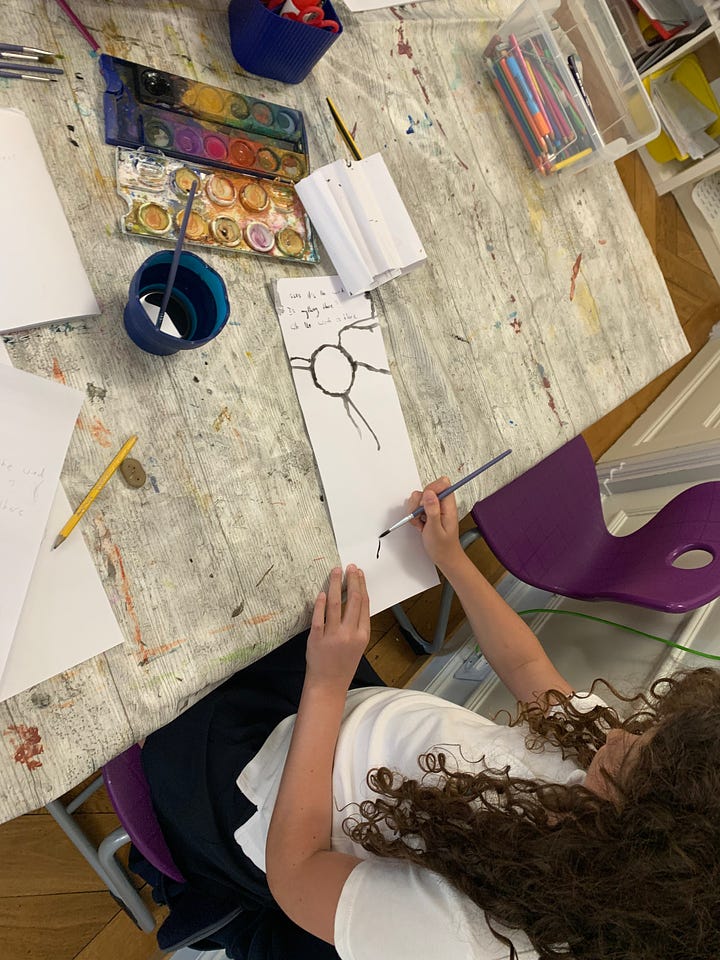
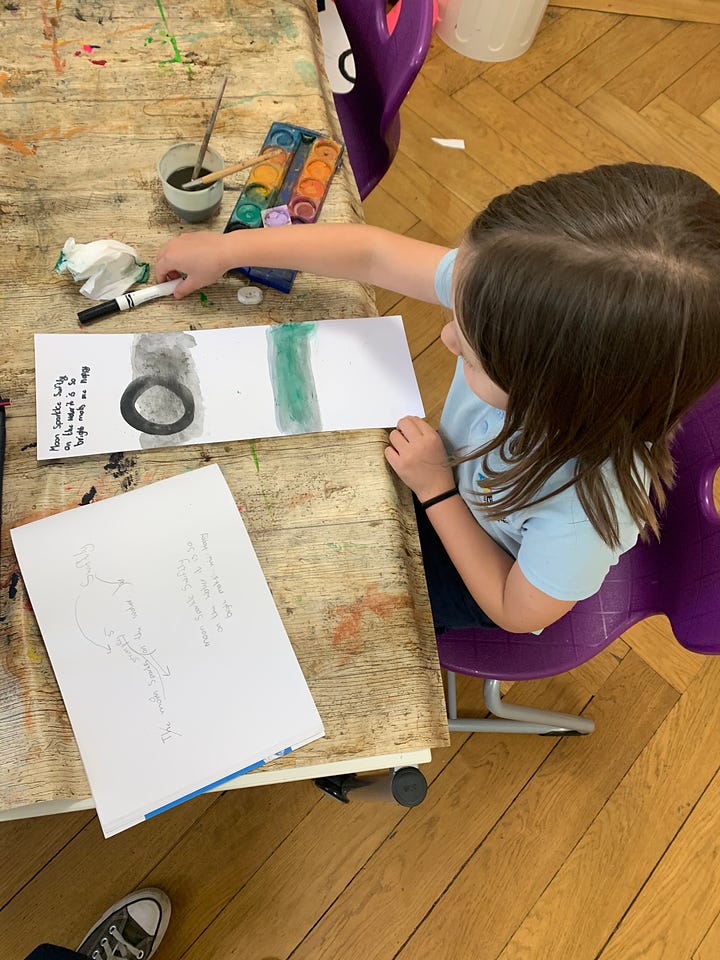
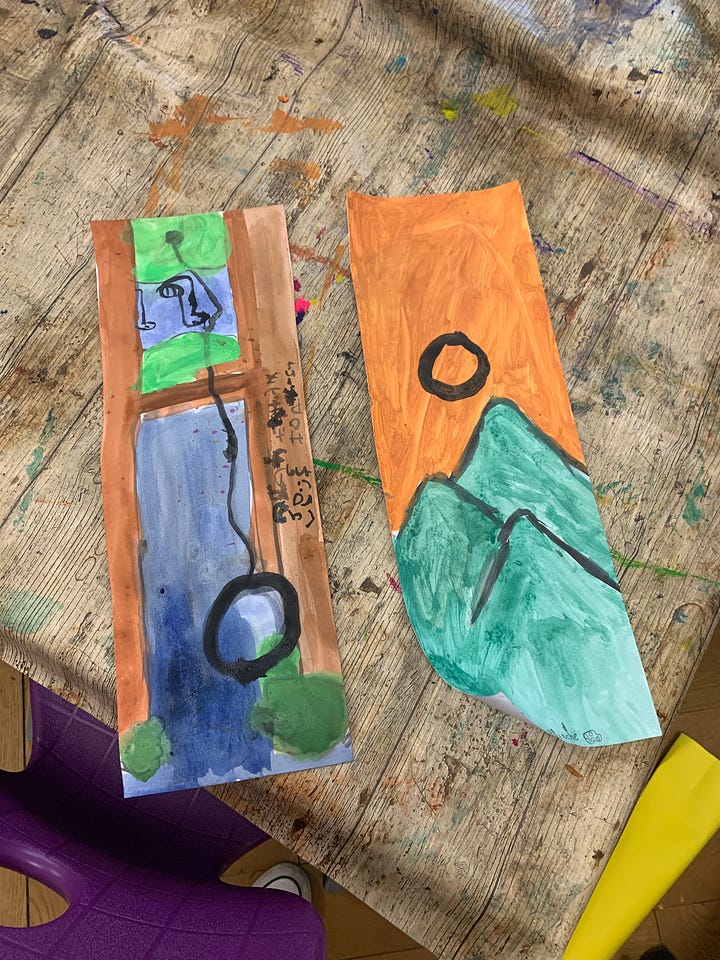
We displayed the scrolls at the school picnic:
Ok, not the best spot but our planned position was grabbed too soon! In any case, it was a fun process and one that the students took great pride in.
So, if you want to have a go, you’ll need:
Something to paint on (white paper works well, but you can use coffee filters, wood, cloth…)
A paint brush (different sizes give different effect; use several if you have them)
Black paint (you can use any color if you don’t have black; I like to add a little blue to my black if it’s not cool enough; it gives a bit of layering to the color when you paint as well)
Now, the steps (read a longer description on Zen Art of Enlightenment) or watch the two videos below:
Get your materials ready
Clear the mind; maybe look out at the trees or practice some seated meditation if you are familiar
Try not to think about your self or anything on your mind; try instead to be part of your surroundings and the universe in general
Don’t think about the finished product! Think instead about the actions in creation
Paint quickly; use a single brush stroke for your circle
Use your entire body; do what feels right
Tap into your own creativity; everyone has this and its unique for each of us; there is no right way to paint an ensō
Et voila! If you’re game, I’d love to see the results. I guess Substack doesn’t allow images in the comments, but you can email it to me to add to this post if you’d like. Or just do it for yourself!
Have fun and enjoy the journey.








